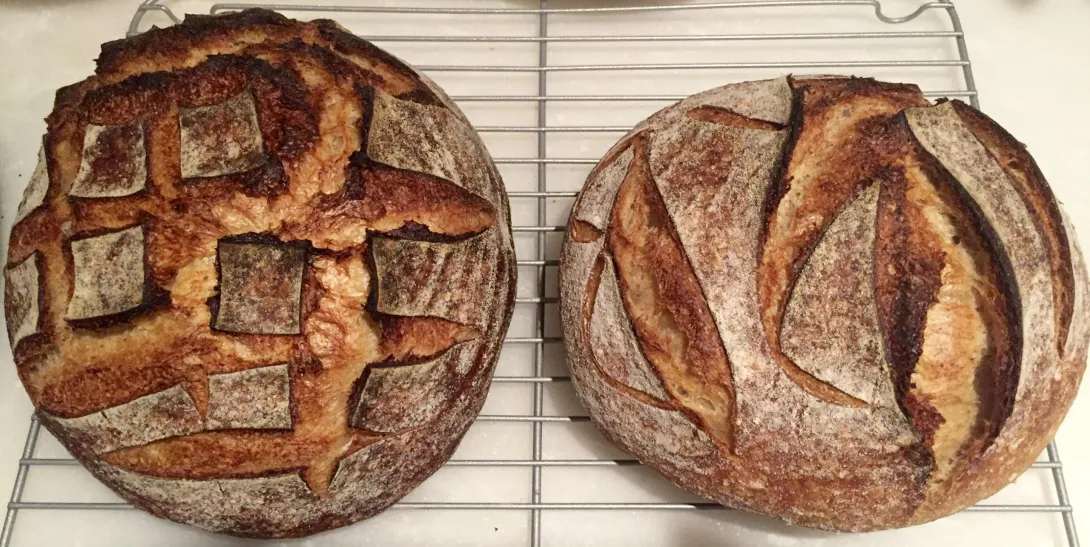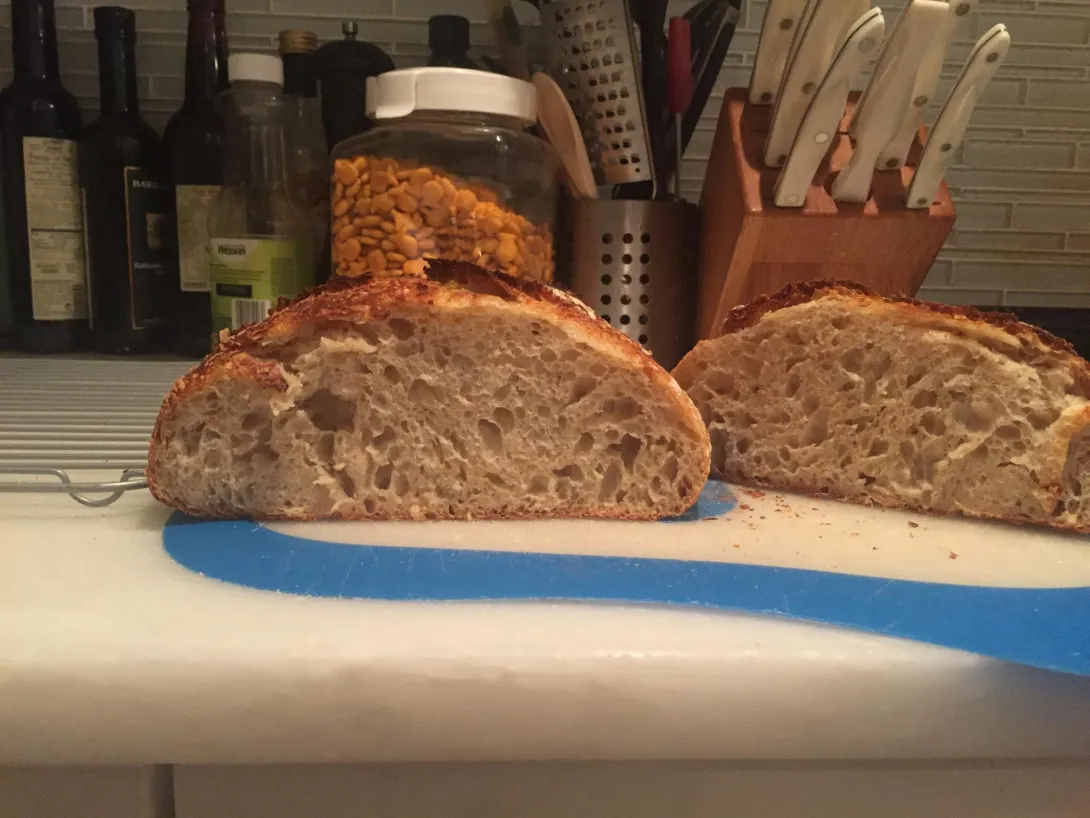Hamelman Vermont Sourdough with Increased Whole Grain

Yesterday i moved one notch further on my journey through Hamelman, attempting his Vermont Sourdough with Increased Whole Grain. Ambition got ahead of my scheduling ability: as soon as I had mixed the flour and water, I realized that i wasn't going to finish in time for my evening plans and this bread was going to be an experiment in extended fermentation. Despite doubling the fermentation time from the recipe, the results were pretty, darn good. If Forkish's times are far too long, are Hamelman's schedules too short?
- Log in or register to post comments
- 13 comments
- View post
- JoshTheNeophyte's Blog
